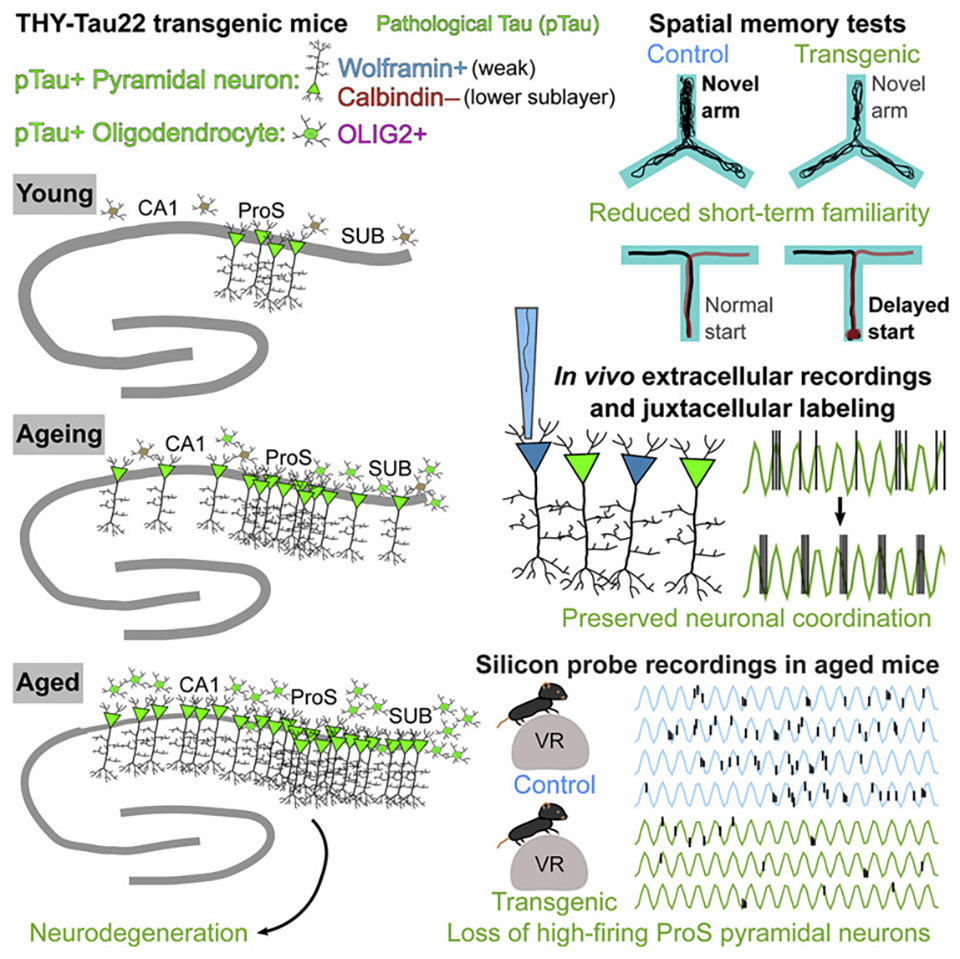
Using Scientifica micromanipulators to investigate consequences of Tau pathology on hippocampal pyramidal neurons and network activity in ageing mice
In a recent journal publication in Cell Reports by Tim Viney and his colleagues at the University of Oxford, Scientifica's IVM Single and IVM Triple micromanipulators were used to investigate consequences of Tau pathology on hippocampal pyramidal neurons and network activity in ageing mice.
Pathological hyperphosphorylated forms of the microtubule-associated binding protein Tau (pTau) are commonly found in people with neurodegenerative diseases, including Alzheimer’s disease, Corticobasal degeneration, and Progressive supranuclear palsy.
About the study
Summary
The aim of the research was find out how pathological forms of the human Tau protein (pTau) affect neuronal activity and memory. To do this, the researchers examined THY-Tau22 transgenic mice, a popular tauopathy model. The team tracked pTau across the lifetime of the mice, tested hippocampal-dependent memory, and recorded network oscillations, single cells, and populations of cells in aged mice.
It was observed that in ageing mice, pTau spread from the axons of pyramidal neurons to oligodendrocytes. The oligodendrocytes are a type of glial cell that insulates axons with myelin.
Transgenic mice were impaired in recognising novelty, but had unimpaired spatial working and reference memory. Hippocampal pyramidal neurons, representing memories, exhibit a wide range of firing rates, and in aged transgenic mice there were significantly fewer high-firing rate pyramidal neurons.
Despite the loss of neurons, network oscillations and the activity of pTau-free neurons within pTau hotspots were surprisingly normal. The results support the hypothesis that unaffected subcortical inputs to the hippocampus maintain the network, largely counteracting the high levels of pTau and neurodegeneration.

Dr Tim Viney, Department of Pharmacology, University of Oxford
"I have used Scientifica IVMs for many years as they are reliable, easy to operate, and help us obtain stable extracellular recordings from single neurons with glass electrodes for subsequent juxtacellular labelling. The 3-axis version is also ideal for acute long-duration in vivo intracranial silicon probe recordings."
Discover more about our In Vivo micromanipulators here.

)